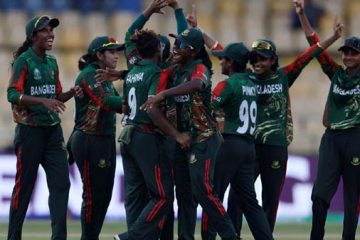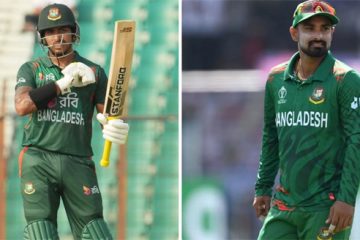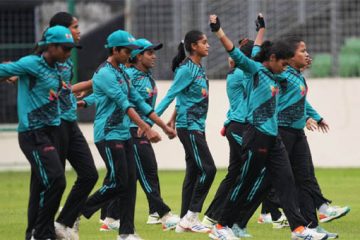The scorecard will always show that Sri Lanka secured a two-run victory against Bangladesh in the first Twenty20 of the two-match series, but it will not capture the pain that the Tigers suffered in defeat. Bangladesh were on course to earn a memorable victory against the top-ranked Twenty20 International side but fell short after TV umpire Gazi Sohel refused to rule that the final delivery from Thisara Perera was a no-ball.
The seamer almost gave the match away as Anamul Haque blasted him for 14 runs in the final over before skying the final ball – a full toss that appeared in video replays to be above waist height – and getting caught by the bowler.
The on-field umpires did not signal a no-ball but the decision was nonetheless referred to the TV umpire, who did not overturn their decision.
Sources close to the Tigers dressing room confirmed that members of the team blasted the decision in anger and left the Zahur Ahmed Chowdhury Stadium in disappointment.
‘We did not make any mistake,’ a member of the Tigers contingent at an optional practice session on Thursday said on the condition of anonymity.
‘It was the fault of the umpire.’
Bangladeshi players have often complained about getting the short-end of umpiring decisions, even when they are the hosts. They observe that other teams often receive the benefit of the doubt from umpires when they play at home and that they do not receive the same treatment.
None, however, would say so publicly, with strict International Cricket Council regulations on the matter putting those who undermine umpires in the media in line for punishment.
‘Perhaps the TV umpire had seen the footage but did not bother to see the height of the delivery,’ a disappointed fan suggested outside Hotel Peninsula, where he was standing with a companion in hopes of catching a glimpse of their beloved Tigers.
‘When will they ever earn home advantage,’ the companion replied, echoing the sentiment that Bangladesh had been deprived of a memorable win.
Maasranga TV, the official broadcaster of the series, had 18 cameras in and around the venue, meeting the ICC’s minimum requirement.
However, production houses will use as many as 25 cameras in international matches involving India to get more angles from around the field, which helps the TV umpire during referrals.
Several sources close to the TV umpire Gazi said that he had not been provided with enough angles of the incident when the decision was referred to him.
Gazi declined to make an official comment about the incident.
-With New Age input




















